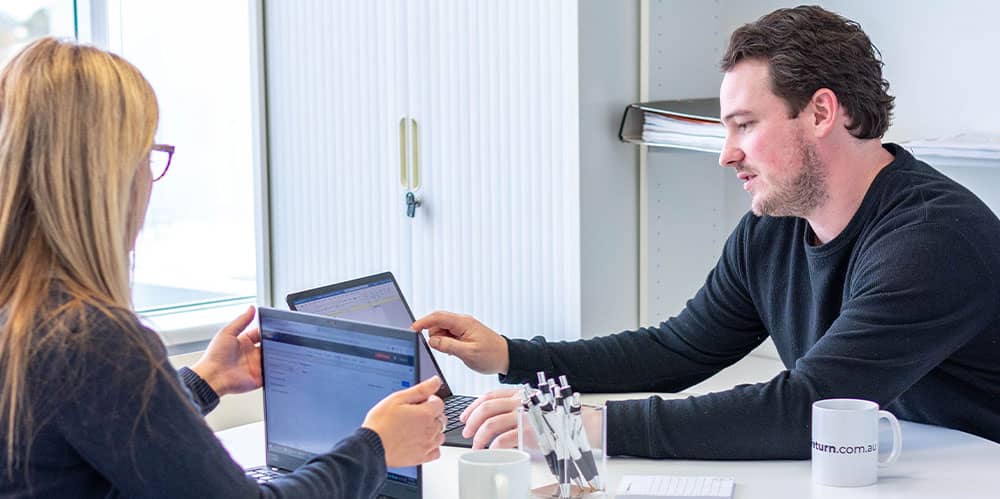Understanding HECS and Tax
In recent years, higher education enrolments in Australia have continued to rise. Back in 2013, about 1.3 million Australians were enrolled in higher education. By 2018, that number had grown to over 1.5 million students attending university. As of 2022, approximately 2.7 million people have a HECS-HELP or related student loan, including both current students and graduates.
Not everyone can afford to pay for their education upfront. Many choose to defer the cost through the Higher Education Loan Program (HELP) — commonly known as HECS-HELP. This government loan scheme allows eligible students to study now and repay later through the tax system. Previously, the program was known as the Higher Education Contribution Scheme (HECS).
As of recent reports, the average student loan balance is now over $26,000, with some graduates owing considerably more. In fact, more than 160,000 people have student debts exceeding $50,000. The size of your debt depends on factors like your course and its length. For example, degrees in medicine, law or dentistry often lead to higher debts than shorter or less expensive programs.
While some families prefer to pay tuition fees upfront, many Australians view HECS-HELP as a more manageable way to access university education — especially with the ability to repay gradually through the tax system once they earn above the repayment threshold.
Upcoming Changes to HECS-HELP in 2025
From 1 July 2025, the government is introducing important updates to make student loan repayments fairer and more manageable. Here’s what you need to know:
1. 20% One-Off Debt Reduction: If you have a HELP debt (including HECS-HELP, FEE-HELP or VET Student Loans), the government will automatically reduce your total loan by 20% before indexation is applied on 1 June 2025.
For example, if you owe $30,000, your debt will drop to $24,000 — with no action required on your part.
2. Higher Repayment Threshold: Right now, you need to start repaying your loan once you earn $54,435 per year. From 1 July 2025, that threshold will rise to $67,000, meaning you can earn more before repayments begin.
3. Fairer Repayment System: Currently, your repayment is calculated on your entire income once you go over the threshold. From July 2025, repayments will only apply to the portion of income above $67,000.
This means if you earn $70,000, your repayments will only be based on the $3,000 over the threshold, not the full amount.
These changes are designed to ease the financial pressure on graduates and ensure repayments better reflect what you can afford.
What is HECS?
HECS is now known as HELP (Higher Education Loan Program). It’s a government loan scheme that supports eligible students studying at a university or approved higher education provider. To use HECS-HELP, you must be enrolled in a Commonwealth Supported Place (CSP).
While HECS-HELP covers the cost of your course fees, it does not include expenses such as accommodation, textbooks, laptops, or other study materials. These costs must be paid out of pocket.
How Does HECS-HELP Work?
Unlike a traditional bank loan, you don’t start repaying your HECS-HELP debt immediately. Instead, repayments are made through the tax system — and only after your income exceeds a certain amount. This amount is called the compulsory repayment threshold.
As of the 2024–25 financial year, the threshold is $54,435. If you earn more than this, you’ll begin making repayments through your tax return. From 1 July 2025, the threshold will increase to $67,000, and a new marginal repayment system will apply — meaning you only repay on the income above that threshold.
Your repayment rate depends on your income and ranges from 1% to 10%. For example, someone earning between $54,435 and $62,850 will repay 1% of their income. The more you earn, the higher the percentage you repay.
You can view the full repayment scale on the official StudyAssist website.
Being a student doesn’t exempt you from repaying your HELP loan. Once your income reaches the repayment threshold, you’ll need to begin making repayments through the tax system.
Repayments from 2024–25 Onwards
For the 2024–25 financial year, the compulsory repayment threshold is $54,435. If you earn more than this amount, a portion of your income will be used to repay your HELP debt. Repayment rates range from 1% to 10%, depending on how much you earn.
From 1 July 2025, the repayment threshold will increase to $67,000, and a marginal repayment system will be introduced. This means repayments will only be calculated on the income above the threshold, rather than your total income — easing the repayment burden for many graduates.
Indexation: What to Expect Going Forward
HELP debts do not accrue interest like a standard loan, but they are indexed annually to reflect inflation. This ensures the real value of the loan remains stable over time.
From 1 June 2024, indexation will be based on the lower of the Consumer Price Index (CPI) or the Wage Price Index (WPI). This change is designed to stop debts from growing faster than wages.
For example:
-
On 1 June 2024, the indexation rate is expected to drop significantly due to this new calculation method.
-
This change applies to the portion of your loan that is more than 11 months old.
These updates aim to make student loan repayments fairer and more manageable for Australians entering the workforce.
What are the Eligibility Requirements?
If you are interested in applying for a HECS-HELP loan, you first need to check whether you are eligible. Your education provider will assess your eligibility when you enrol.
A key requirement is that you must be enrolled in a Commonwealth Supported Place (CSP). This is a type of enrolment where the total cost of your course is split:
-
The Australian Government pays a portion as a subsidy.
-
You pay the remaining amount, known as the student contribution.
To access a HECS-HELP loan, you must meet all the following criteria:
-
Be an Australian citizen, and study at least part of your course in Australia; or
-
Be a New Zealand Special Category Visa (SCV) holder who meets the long-term residency requirements (i.e. living in Australia for at least 10 years, with at least 8 of those years as a minor); or
-
Be a permanent humanitarian visa holder and reside in Australia for the duration of your course.
Only Australian and New Zealand citizens can get a CSP. An exception is if you are a permanent visa holder who will study and stay in the country throughout the whole course.
Most New Zealand citizens and other permanent visa holders are not eligible for a HECS-HELP loan (even if they can access a CSP).
However, they may still receive a CSP and just pay their student contribution upfront if not eligible for HECS-HELP.
The HECS-HELP loan is for Australian citizens who meet residency requirements, which include studying at least some parts of the course in the country. If you are a New Zealand Special Category visa holder, you can also get a loan. Permanent humanitarian visa holders who meet the residency requirements in New Zealand can also apply.
Another condition is that you should send the completed form for the Request for Commonwealth support and HECS-HELP to the provider on time. There are loan deadlines to know about, which are known as the census dates. They pertain to the last day of withdrawing from your course without paying any charges.
Finally, you can apply for the HECS-HELP loan if you are enrolled in all units or subjects during the census date. If you meet the requirements, but you have already borrowed up to your loan limit from this program, your application will not be approved.
What are the Benefits?
HECS-HELP acts as both a government subsidy and a loan scheme to help eligible students cover their university course fees. If you’re studying in a Commonwealth Supported Place (CSP) and meet the eligibility criteria, the Australian Government pays the subsidised portion of your tuition directly to your education provider. You are responsible for the student contribution amount, which you can either pay upfront or defer using a HECS-HELP loan.
Upfront Payments and Discounts
If you pay at least $500 of your student contribution upfront, you may still be eligible for some financial incentives or fee reductions, depending on current government policies. However, as of recent years, the previous 10% upfront payment discount has been removed.
How Repayments Work
You don’t start repaying your HECS-HELP loan while you’re studying. Instead, repayments begin only when your income reaches the compulsory repayment threshold. From 1 July 2025, this threshold will rise to $67,000. Repayments are made automatically through the tax system, based on your income level.
Loan Limits and HELP Balance
There is a combined HELP loan limit that includes all forms of HELP loans (HECS-HELP, FEE-HELP, VET FEE-HELP, etc.):
-
Standard limit: $121,844 (2024)
-
Higher limit: $162,336 for courses in medicine, dentistry, and veterinary science
These limits are indexed annually.
You don’t have to borrow the full amount. Any unused portion of your limit is called your HELP balance, and it can be replenished over time through voluntary repayments or compulsory repayments via your tax return. Once repaid, that amount becomes available to borrow again if needed for future studies.
About HECS Repayments: Should You Pay in Advance?
In the past, paying off your student loan early came with incentives, such as discounts for voluntary repayments. However, those incentives no longer exist. Today, there is no financial advantage for paying off your HECS-HELP loan ahead of schedule, unless you want to reduce your overall debt sooner.
At the same time, the government has introduced stricter repayment policies. Whether your repayments are made voluntarily or deducted through the tax system, they are tracked by the Australian Taxation Office (ATO). Your repayment rate is based on your repayment income, which includes your taxable income and other financial factors.
When Does Your Debt Start?
Your HECS-HELP debt is incurred immediately after the census date of your course. This is the point at which your enrolment becomes final and your HELP loan is formally applied. From that moment, the debt becomes active — even if you later withdraw from the course.
The Reality of Indexation
Although student loans don’t attract interest, they are still indexed annually to keep up with inflation. Some argue that indexation isn’t the same as interest, but it still increases your loan balance — and with wages growing slowly, many people find it hard to get ahead.
From 1 June 2024, indexation will be based on the lower of the Consumer Price Index (CPI) or Wage Price Index (WPI). This change is intended to reduce the financial pressure on graduates, but it doesn’t eliminate the impact of rising living costs.
Long-Term Debt for Many Australians
It’s common for Australians to carry their student debt well into their 30s — particularly those with large balances from extended or high-cost degrees. With indexation typically lower than mortgage or credit card interest rates, financial experts often recommend focusing on repaying higher-interest debts first, and treating HECS-HELP as a low-priority loan unless you’re aiming to clear all personal debt.
How Does HECS Impact Taxes?
Let us say that you took out a HELP loan to cover your tuition fees. Eventually, you finish your degree with a $20,000 HECS-HELP debt. You then start a full-time job with a salary of $55,000 per year. Based on your income, you are now required to begin repaying your student loan.
At this income level (based on the 2024–25 repayment threshold of $54,435), your repayment rate is 1%. This means 1% of your income will go directly toward your loan. A set amount is automatically withheld from your pay alongside your tax, resulting in repayments of $550 per year, or roughly $21 every fortnight.
Keep in mind that your loan balance is also subject to annual indexation. Although student loans don’t attract interest, your debt will still increase each year on 1 June, in line with inflation — now based on the lower of CPI or WPI, starting from 2024.
If you take out another loan to purchase a car or a house, you will have to include your student debt when making repayments. Even if you work overseas, you still have to repay the HELP debt. Many banks will turn down your loan application because you still have an existing student loan. In other words, your borrowing capacity is lowered while your risk profile increases.
Before accessing a HELP loan, it is your responsibility to understand what it entails. You should also know about your repayment obligations. Changes can take place from time to time. Make sure that you are well aware of the modifications and how they can affect your loan, especially its repayments.
Transitioning to tertiary study is not easy. You should ensure that you have a smooth move by learning which qualifications and courses suit your requirements. You should also find a provider that offers HELP loans to figure out what financial assistance you are eligible for. Think about your career options, as well.
The transition can begin by getting a tax file number early. You are required to submit your TFN when you get a HECS-HELP loan. If you do not have it yet, you can send a Certificate of TFN Application by the census date. The fastest way for you to get a TFN is with Australia Post. Once you have the number, you should always keep it secure.
Your repayment income for your HELP loan is different from your taxable income. It will depend on various factors, including:
- Your current taxable income and your overall net investment losses
- Your super contributions
- Total fringe benefits amount on your PAYG
- All your exempt foreign employment income
The transition can begin by getting a tax file number early. You are required to submit your TFN when you get a HECS-HELP loan. If you do not have it yet, you can send a Certificate of TFN Application by the census date. The fastest way for you to get a TFN is with Australia Post. Once you have the number, you should always keep it secure.
Your repayment income for your HELP loan is different from your taxable income. It will depend on various factors, including:
Always check your debt balance. To do so, you can contact the ATO and provide the office with your TFN. You will usually have to verify your personal details first before you can get the information about your balance. Another way is to log in to myGov site and find the HECS-HELP balance from your online account statement.
HECS stays until you repay all your balances. You can pay for the debt through tax, either compulsory or voluntary repayments:
Types of HECS Repayments
HECS stays until you repay all your balances. You can pay for the debt through tax, either compulsory or voluntary repayments:
When you start a new job, you need to let your employer know that you have a HECS-HELP debt. You’ll do this by ticking ‘Yes’ to the student loan question on the Tax File Number Declaration form you complete before starting work.
Once your employer knows about your loan, they’ll withhold extra tax from your pay. This helps cover the repayments you’ll need to make when you lodge your tax return. The amount they withhold is based only on the income you earn from that job.
If you have more than one job, only one employer will normally withhold for your HELP debt. The tax office will add up all your income when you do your tax return, and if you haven’t paid enough, you may need to make an extra repayment at that time.
You can also make voluntary repayments at any time if you want to reduce your loan faster or free up more of your HELP balance for future study. Just keep in mind that voluntary repayments don’t give you any discounts — they just help reduce your total balance.
You are allowed to pay off your loan early or at any time you wish. You will first have to contact the ATO and send the payment through BPAY or your credit card. You can also visit ATO’s office to get more information about how you can make early repayments. If you wish to get help from the experts, you can contact TaxReturn.com.au. We will gladly assist you so that you can make repayments at the best time.
More importantly, we urge students and those with existing student loans to keep their receipts. This way, claiming tax deductions will become much easier when you have the proof for your claim. The professionals here at TaxReturn.com.au can help you keep track of your taxes and which ones you can claim. This way, you will know whether you can reduce your HELP Repayment Income and even minimise your compulsory repayments.
If the mentioned places do not have your TFN, the best thing to do now is to contact the ATO directly at 13 28 61.
Once you have your TFN you’re ready to work and be paid! This goes a long way to helping you sort your taxes easy and making your tax return simple, TaxReturn.com.au can help you get your tax return done fast.






